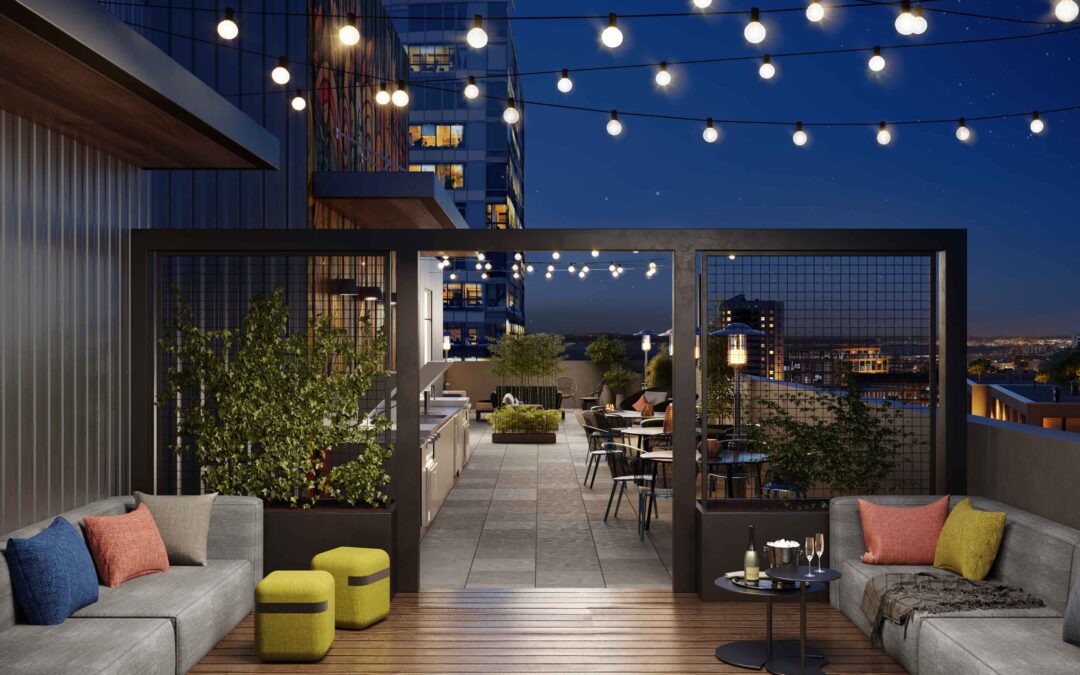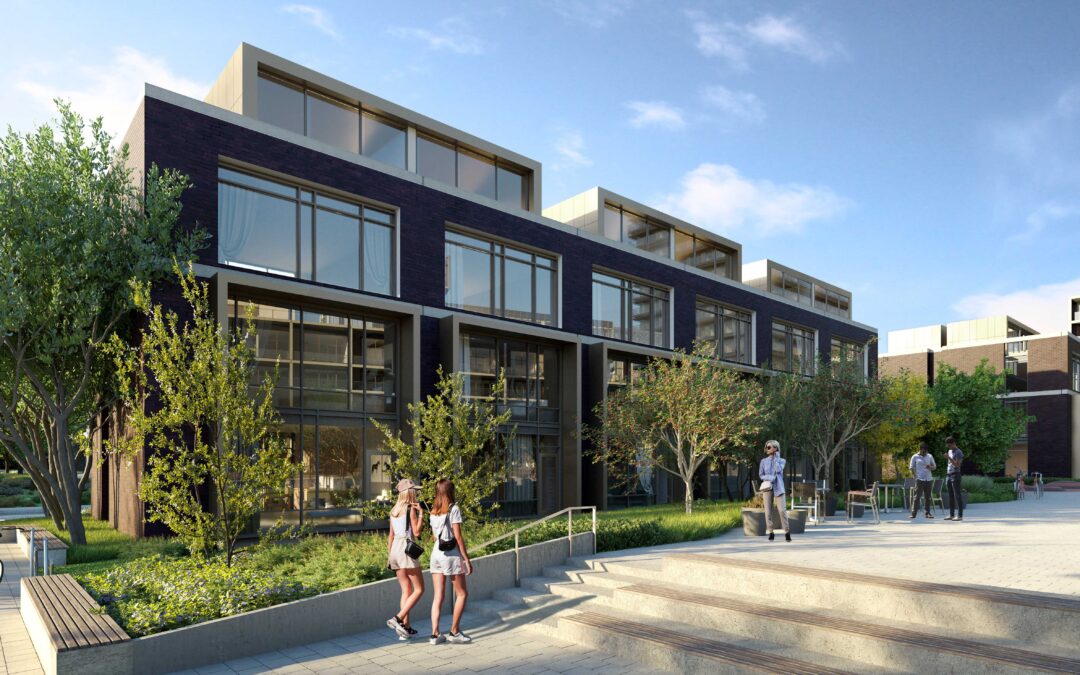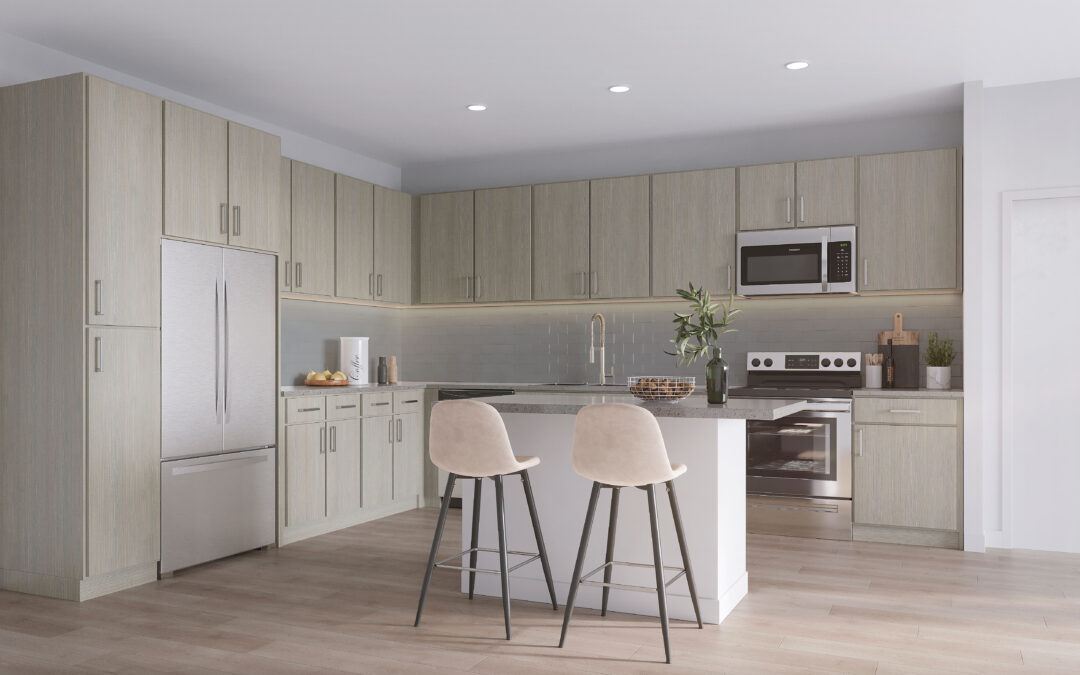
Real Estate Animation Flythrough Costs Guide
Real estate animation flythrough videos are increasingly becoming a necessity for property developers, brokers and agents during the pre-development and lease-up of a property. These videos provide a realistic and engaging way to showcase new developments to potential buyers, giving them a virtual tour of the property even before it is built. But how much does it actually cost to create a real estate animation flythrough video ? Let’s break down the cost factors involved in creating a captivating animation flythrough video.
Factors Influencing the Animation Cost
Quality and Complexity: The level of detail and complexity involved in the animation greatly impacts the cost. High-quality animations with intricate details, complex textures, and realistic lighting require more time and effort to create. For instance, a single-family home may require fewer details, making it relatively straightforward to animate. However, a mixed-use development with retail, residential, and office spaces, would necessitate a higher level of detail and complexity. This would involve animating various types of spaces, each with its own set of furnishings, lighting, and textures. Additionally, the inclusion of dynamic elements, such as people, vehicles, and landscaping, further adds to the complexity and, therefore, the cost. The animation of each space needs to be meticulously planned and executed, with careful attention paid to the lighting, textures, and camera movements to ensure a seamless and engaging viewer experience. This level of detail and complexity requires a higher level of skill and expertise, as well as more advanced software and hardware, all of which contribute to the increased cost. Moreover, the creation of multiple scenes for both interior and exterior spaces necessitates more rendering time, which, as previously discussed, is a significant cost factor.
Technology Used: A crucial early factor in determining the cost of a video is the engine in which it is modeled and rendered. Basic animations can be created using rendering engines like Lumion, Enscape, Twinmotion, and Unreal Engine. While these engines are capable of creating animations, they come with certain limitations. For higher-end animations, the industry standard involves using 3ds Max and V-Ray. V-Ray offers a lot more control over the animation, enabling the creation of more detailed and realistic scenes. However, this greater control and quality come at a cost. The machine time required to render the animation can be extensive. The machine time cost to render could range from $2,000 to $10,000, depending on the length and priority of the video. This range considers factors such as the complexity of the scenes, the level of detail required, and the speed at which the render needs to be completed. Additionally, the use of advanced features in V-Ray, such as global illumination, detailed shadows, and complex materials, can further increase the rendering time and, consequently, the cost. Therefore, while using 3ds Max and V-Ray can result in a superior final product, it is important to carefully consider the increased costs and time requirements involved.
Length of the Video: The length of the video plays a significant role in determining the cost. Usually, the length of a real estate flythrough video ranges from 1 to 3 minutes. If V-Ray is used the longer videos require more computer resources to render which leads to a higher cost.
Experience of the Service Provider: The experience and expertise of the animation studio you choose to work with will also influence the cost. Experienced professionals usually charge higher fees but also deliver higher quality work.
Real Estate Animation Process and Cost
Now that we have discussed the factors that influence the cost let’s break down the cost of creating a real estate animation flythrough video.
Pre-production: This is the initial phase of the project where the concept and storyboard are developed. It involves planning, scripting, and creating a rough sketch or storyboard of the animation. This part of the project differs from client to client. For some, we are creating more basic paths touring a project, and for others, we are telling a story using B-roll and actors to enhance the animation video.
The complexity of the concept and storyboard can significantly impact the time and effort required in this phase. For instance, creating a basic path touring a project involves plotting the camera paths, defining the key areas to be highlighted, and developing a rough outline of the animation. This is relatively straightforward and involves fewer complexities. However, if the client wants to tell a story using B-roll and actors, it requires a more detailed and intricate planning process. This involves developing a narrative, creating a script, planning the shots and camera angles, and deciding on the location and actions of the actors. All these additional elements add a layer of complexity to the project and require more time and effort to plan and execute. Moreover, the inclusion of actors may also involve casting, directing, and coordinating with a film crew, all of which contribute to the overall cost of the project.
Therefore, while creating a detailed and engaging narrative with B-roll and actors can greatly enhance the impact and appeal of the animation video, it is important to consider the additional time, effort, and cost involved in this process. Careful planning and coordination with the client and other stakeholders are essential to ensure a successful outcome and to manage the budget effectively.
Production: A significant part of the cost will depend on the starting point of the project. If we are provided with a 3ds Max model in excellent condition, it will save us a considerable amount of time and, consequently, reduce the overall cost. This is because a well-prepared 3ds Max model will already have many of the necessary elements for the animation, such as the 3D geometry, materials, and textures, requiring less time for preparation and optimization. On the other hand, if we start with CAD files and need to model everything from scratch, the cost would be higher. CAD files usually contain only the basic geometric information of the structure, and converting these into a fully detailed 3D model suitable for animation involves a lot of additional work. This includes creating the 3D geometry, adding materials and textures, setting up the lighting, and optimizing the model for animation. Additionally, creating the environment around the property, such as landscaping, roads, and neighboring buildings, will also add to the cost. All these additional steps require a higher level of skill and expertise, as well as more time and effort, which ultimately increases the overall cost of the production. Therefore, it is important to consider the starting point of the project and plan the budget accordingly. Providing the animation studio with the most detailed and well-prepared files available can significantly reduce the production time and cost.
Post-production: This is the final phase of the project where the animation is edited, sound and music are added, and any final adjustments are made. For a video including B-roll shots, the post-production is often more time-consuming. The inclusion of B-roll shots adds an extra layer of complexity to the editing process as they need to be seamlessly integrated into the main animation. This involves carefully selecting the appropriate shots, editing them to the correct length, and synchronizing them with the main animation and audio. Additionally, color correction, sound mixing, and adding special effects or graphics are also part of this phase. All these additional steps require a higher level of skill and expertise, as well as more time and effort, which ultimately increases the overall cost of the post-production.
Adding sound and music is a crucial part of the post-production process. The sound and music need to be carefully selected and edited to match the pace and mood of the animation. This may involve creating a custom soundtrack or selecting and licensing music from a library. Adding voiceovers, sound effects, and ambient sounds are also part of this process. All these audio elements need to be carefully mixed and balanced to create a cohesive and engaging audio experience.
Finally, any final adjustments to the animation, such as tweaking the lighting, adjusting the camera movements, or making last-minute changes to the 3D models, are made during this phase. This may also involve rendering the final animation in the desired format and resolution.
Conclusion
Creating a real estate animation flythrough video for is an excellent way to showcase the property to potential buyers. However, the cost of creating such a video can vary widely based on several factors, including the length of the video, the quality and complexity of the animation, the level of customization required, the number of revisions requested, the technology and software used, and the experience of the service provider.
For animation videos created by top studios without actors, the cost typically will be $15,000+, although some can command higher prices depending on the size of the property, its complexity, and the project deadline. Adding actors to animation videos from top studios can easily increase the cost by an additional $25,000 to $50,000, depending on the complexity of the shoots and the size of the crew and equipment needed.
For videos produced using some of the lower tier rendering engines and by less experienced teams, costs can be below $15,000. If cost is the most important factor, this is often the way to go. However, for clients looking to sell, market, or get approval for their projects, it is recommended not to take this route.
While cost is an important consideration, it is also crucial to focus on the quality of the animation. A high-quality, engaging animation can greatly enhance the appeal of the property and help attract potential buyers. Therefore, it is worth investing in a professional, high-quality real estate animation flythrough video to showcase your new developments in the best possible light.
Additionally, it’s important to choose a studio with a proven track record and expertise. Our team at Radical Galaxy Studio has worked on animations across various sectors, from hospitality, working with brands such as Hyatt, to multi-use animations for Brookfield. We have also collaborated with major real estate players on both office and residential properties for the likes of Oxford, Hines, JLL, Cushman, Stream, and Sterling Bay, to name a few. Our experience extends to residential developers on condo, multifamily, and single-family animation projects, ranging from basic pan shots to more involved and intricate videos. With a vast portfolio spanning different types of properties and animations, we are well-equipped to handle your animation needs. If you have any questions about animations, don’t hesitate to contact us.




